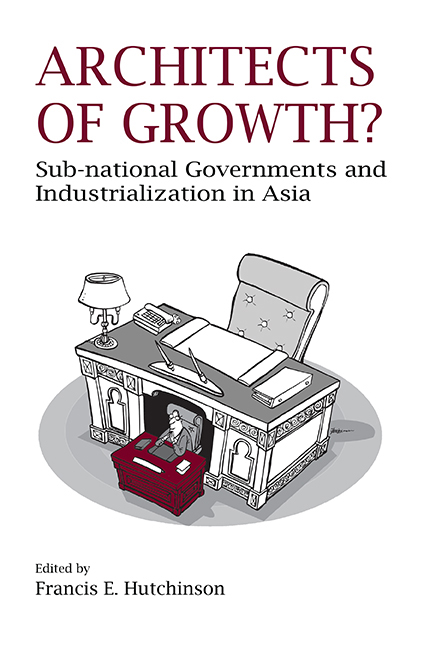Book contents
- Frontmatter
- Contents
- List of Tables
- List of Figures
- Foreword
- Preface and Acknowledgements
- Contributors
- Abbreviations
- I Introduction and Industry Overview
- II Cases from Industrializing Southeast Asia
- III Cases from China and India
- IV Cases from Industrialized Countries
- 9 The Development of Singapore's Electronics Sector
- 10 The Evolution of an Industrial Cluster and Its Policy Framework: The Case of Gumi City, Korea
- 11 The Case of the Electronics Sector in Kaohsiung Municipality, Taiwan
- 12 Sub-national Policy and Industrial Transformation in Conclusions
- V Conclusion
- Index
9 - The Development of Singapore's Electronics Sector
from IV - Cases from Industrialized Countries
Published online by Cambridge University Press: 21 October 2015
- Frontmatter
- Contents
- List of Tables
- List of Figures
- Foreword
- Preface and Acknowledgements
- Contributors
- Abbreviations
- I Introduction and Industry Overview
- II Cases from Industrializing Southeast Asia
- III Cases from China and India
- IV Cases from Industrialized Countries
- 9 The Development of Singapore's Electronics Sector
- 10 The Evolution of an Industrial Cluster and Its Policy Framework: The Case of Gumi City, Korea
- 11 The Case of the Electronics Sector in Kaohsiung Municipality, Taiwan
- 12 Sub-national Policy and Industrial Transformation in Conclusions
- V Conclusion
- Index
Summary
Introduction
Explaining the development of the electronics sector in Singapore inevitably involves a discussion of the country's economic history. In many aspects, the country's industrialization experience highlights the sector's role in creating national economic growth. Two themes underscore the evolution of the electronics sector in Singapore. First, the industry was transformed over a relatively short period of 40 years. Secondly, the government has played a major role in fostering this change.
Unlike the experience of developed economies, where industrialization originated with textiles and apparels, Singapore's development was driven by more capital-intensive industries such as electronics. Its concerted effort in development coincided with the period where multinational corporations (MNCs) from developed economies were seeking production bases abroad to lower costs. This timing was fortuitous, as the microelectronic revolution had just begun. Hence, the manufacturing of a whole stream of electronic products, from simpler peripherals such as diskettes to more sophisticated items like disk drives, provided opportunities for local enterprises to flourish. Singapore rode on this “electronic wave” to nurture and develop a strong base for the electronics sector.
Today, the electronics sector remains a major pillar of Singapore's growth. The country houses 14 silicon wafer fabrication plants, 20 semiconductor assembly and test operations, 40 integrated circuit (IC) design centres, and the world's top three wafer foundries. Furthermore, about 80 per cent of the world's enterprise hard disk drives and 40 per cent of the world's hard disk media volume is produced in Singapore.
Many of the investments described above are the result of a series of policies implemented from 1965 to 2010. Pragmatic management of the economy by the state has kept the electronics sector relevant through encouraging higher use of capital and technology. Throughout Singapore's development, government policies have been characterized by their coherence and consistency towards the single objective of promoting economic growth; and responsiveness towards changing business conditions. Today, the government's plans for the sector include transforming the industry into an innovation-driven electronics hub providing technological, manufacturing and business solutions. This will develop new growth areas essential for the industry's future prospects.
The following section provides an overview of the performance of the electronics sector in Singapore. The subsequent section sets out the state's role in fostering growth within the sector over the past four decades. A final section concludes the chapter.
- Type
- Chapter
- Information
- Architects of Growth?Sub-national Governments and Industrialization in Asia, pp. 245 - 278Publisher: ISEAS–Yusof Ishak InstitutePrint publication year: 2013

